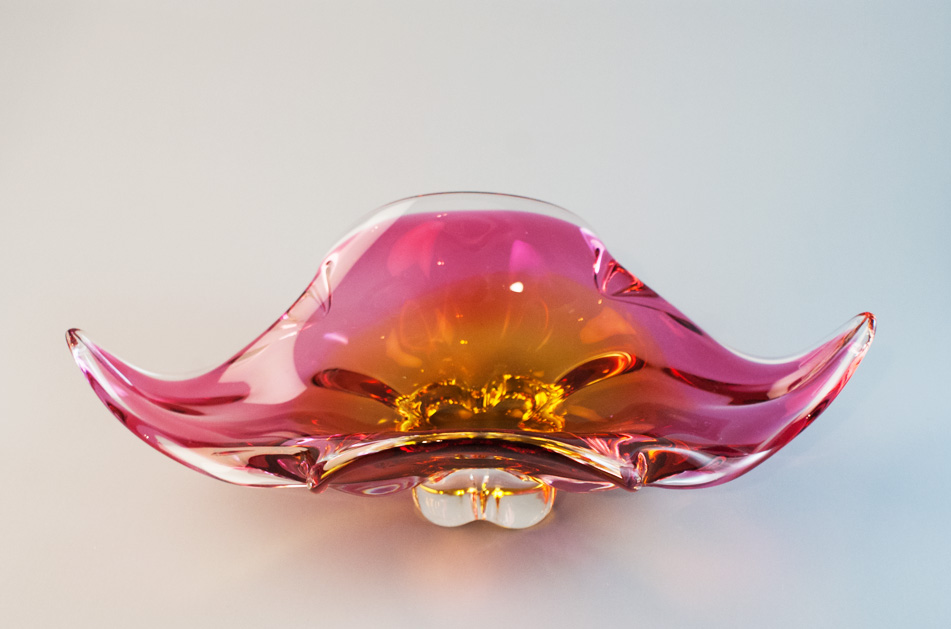
About: This article explores the historical and cultural context of Czechoslovakian Glass Making Innovations such as the impact of war and political upheaval on the Czech glass industry. It also mentions the various techniques and styles that emerged in Czech glassmaking during the first half of the 20th century.
Czech glass has long been renowned for its exceptional quality and beauty and the 20th century was a time of significant innovation and development in this field. From the emergence of new techniques and styles to the contributions of prominent artists and designers, Czech glass in the 20th century left a lasting legacy that continues to inspire and captivate.
One of the most notable aspects of Czech glass in the 20th century was the sheer range of techniques and styles that emerged during this time. Glassmakers in the Czech Republic were known for their experimentation and willingness to push the boundaries of what was possible, resulting in a stunning variety of textures, colors, and shapes.
Techniques of Czechoslovakian Glass
GRAAL
One of the most significant developments in Czech glass during the 20th century was the emergence of the “graal” technique. This involved layering multiple layers of glass in different colors, and then carving away the outer layers to reveal the inner layers, creating intricate designs and patterns. This technique was pioneered by Swedish glassmakers in the early 20th century, but was further developed and refined by Czech glassmakers in the following decades.

Vase of Graal glass designed by Vicke Lindstrand .In this technique cameo cutting is followed by further furnace work and a final clear cutting.
“The History of Glass” Black Cat, 1992
CUT GLASS
Another important technique that emerged in Czech glass during the 20th century was “cut glass.” This involved cutting intricate patterns into the surface of the glass, creating a dazzling array of textures and reflective surfaces. Cut glass became particularly popular in the 1920s and 1930s, and many of the most famous Czech glass designs from this era feature intricate cut patterns.
PRE WWII Styles of Czech Glass
In addition to these techniques, Czech glass in the 20th century was also known for its diverse range of styles. From the sleek and modernist designs of the 1920s and 1930s to the more organic and fluid forms of the 1960s and 1970s, Czech glass in the 20th century encompassed a wide range of aesthetics.
ART NOUVEAU
One of the most influential styles in Czech glass during the 20th century was Art Nouveau. This style emerged in Europe in the late 19th century, and was characterized by its use of flowing, organic forms and decorative motifs inspired by nature. In Czech glass, Art Nouveau was particularly associated with the work of the designer Louis Comfort Tiffany, who was known for his use of iridescent glass and intricate floral designs.

Polychrome overlay glass lamp with lightly etched cameo decoration, Czechoslovakia 1920s. Height: 38cm (15in)
“The History of Glass” Black Cat, 1992
MODERNISM
Another important style in Czech glass during the 20th century was the modernist movement. This style emerged in the early 20th century, and was characterized by its focus on simplicity, functionality, and the use of new materials and techniques. In Czech glass, the modernist movement was particularly associated with the work of designers such as Josef Hoffmann and Adolf Loos, who created sleek, geometric designs that were both elegant and functional.
Despite the many innovations and achievements of Czech glass in the 20th century, this period was not without its challenges. Political upheaval and war had a significant impact on the Czech glass industry, and many glassmakers were forced to adapt to changing circumstances in order to survive.
One particularly challenging period for the Czech glass industry was the period of Nazi occupation during World War II
Czech glass industry during World War II
The period of Nazi occupation during World War II was a challenging time for the Czech glass industry, as it was for many other industries in the region. Under Nazi control, the Czech glass industry was heavily restricted in terms of its production and exports, with many glassmakers forced to adapt to new circumstances in order to survive.
One of the most significant changes that occurred during this period was the shift away from luxury goods towards more utilitarian products. With access to high-quality materials severely limited, glassmakers were forced to produce more practical items such as laboratory glassware and light bulbs. Many glass factories were also converted for use in the war effort, producing items such as munitions and aircraft parts.
Despite these challenges, however, the Czech glass industry managed to continue producing exceptional work even under difficult circumstances. One example of this was the production of glass beads, which were used as currency by American and British soldiers during the war. These beads were highly prized for their beauty and durability, and were produced in large quantities by Czech glassmakers during the war years.
Another notable achievement of the Czech glass industry during the Nazi occupation was its role in the resistance movement. Many glassmakers were involved in underground resistance activities, using their expertise in glassmaking to produce fake documents and other items needed by the resistance. This work was highly dangerous, and many glassmakers were arrested or killed as a result of their involvement.
Overall, the period of Nazi occupation was a difficult time for the Czech glass industry, but it was also a period of resilience and innovation. Despite the challenges, Czech glassmakers managed to continue producing exceptional work, adapting to new circumstances and finding new ways to use their skills and expertise.
Today, the legacy of Czech glass from this period serves as a testament to the resilience and creativity of the human spirit in the face of adversity.
We have an exceptional quality Czech Art Glass artefact in our shop.



